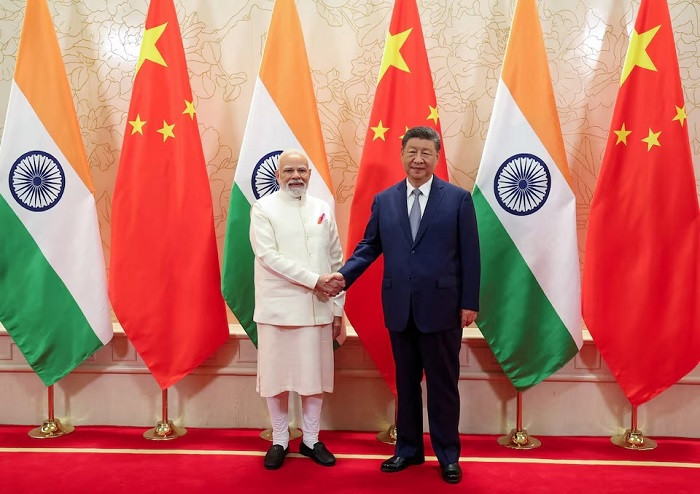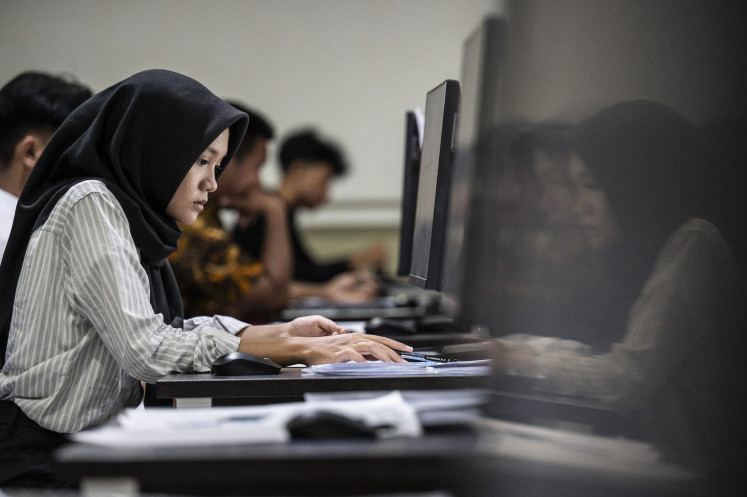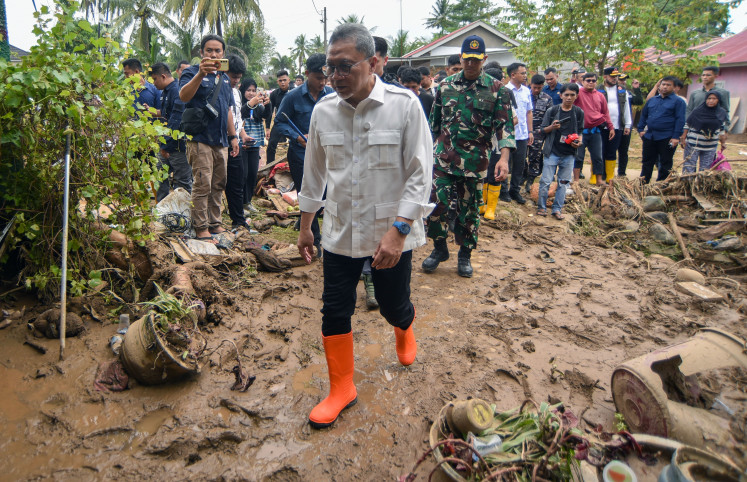Popular Reads
Top Results
Can't find what you're looking for?
View all search resultsPopular Reads
Top Results
Can't find what you're looking for?
View all search resultsTianjin talks: Turning conflict into cautious cooperation
The Tianjin summit suggests that Modi and Xi did not seek reconciliation, but stabilization, learning from the US-Soviet detente during the Cold War.
Change text size
Gift Premium Articles
to Anyone
S
ometimes, history moves not through bold declarations but through quiet recalibration. That is what unfolded in Tianjin, China, on Sunday, when Indian Prime Minister Narendra Modi and Chinese President Xi Jinping met on the sidelines of the Shanghai Cooperation Organization (SCO) summit.
This was no routine diplomatic handshake. It was a deliberate attempt to stabilize one of Asia’s most strategically important and historically fraught relationships. For two powers that fought a war in 1962, endured repeated border crises and collided violently in Galwan Valley just four years ago, sitting across the table for meaningful talks is itself an act of strategic courage.
Modi’s visit to China (the first since 2018) was not a victory lap; it was a signal. For months, quiet backchannel negotiations had prepared the ground. The leaders’ brief meeting at the BRICS summit in Kazan, Russia, last year opened a door, but Tianjin carried greater weight. It offered both nations a chance to address not merely grievances but structural irritants: borders, trade, connectivity and mutual mistrust.
When Modi spoke of a “positive direction”, he was not indulging in platitudes. He pointed to tangible shifts: Peace along a militarized Himalayan frontier, the resumption of the Kailash Mansarovar Yatra, a pilgrimage as politically symbolic as it is spiritually sacred, and plans to restore direct commercial flights, a mundane but telling indicator of bilateral health.
Xi’s words were measured, but his acknowledgment that the destinies of nearly 2.8 billion people are intertwined was neither accidental nor perfunctory. China knows that persistent hostility with India undermines its regional posture, especially while Beijing remains locked in a costly rivalry with Washington and faces mounting economic headwinds at home.
To understand Tianjin, we must also understand Washington. President Donald Trump’s decision to impose tariffs of up to 50 percent on Indian goods, over trade policies and India’s continued oil imports from Russia, did more than jolt Indian exporters. It revealed how quickly United States protectionism can cut against Indian interests.
For China, the tariffs presented an opening. Beijing’s envoy in New Delhi, Xu Feihong, denounced Washington’s measures, warning that “silence or compromise only emboldens the bully”. His promise that China would “stand with India” was more than rhetoric; it was geopolitical chess, offering India leverage in its delicate balancing act between the US, Russia and China.
India has cultivated a strategic partnership with Washington, deepening defense ties and joining the Quad alongside Japan and Australia. But that partnership is transactional, not sentimental. When US economic nationalism undercuts India’s export-driven growth, New Delhi must hedge. A thaw with Beijing, even a modest one, strengthens India’s negotiating position everywhere else.
Earlier this month, the 24th round of special representative talks on the boundary question produced something rare: A tentative road map. Chinese Foreign Minister Wang Yi and Indian National Security Adviser Ajit Doval agreed to reopen border trade routes and revive military confidence-building mechanisms.
These steps are not glamorous, but they matter. Restoring flights (frozen since the pandemic) signals normalcy. Reopening trade corridors injects oxygen into border economies. Most importantly, they create habits of cooperation. Progress on “low-hanging fruit” is often the precondition for resolving harder issues.
But the hardest issue remains the border itself. The scars of the Galwan Valley clash in June 2020, where soldiers from both nations died in brutal hand-to-hand combat, are deep. Nationalist passions remain inflamed. Neither side is prepared to cede territorial claims. The Line of Actual Control (LAC) remains militarized. Mutual suspicion is baked into bureaucratic reflexes.
And yet, as history teaches, enduring peace often begins with managing (not immediately solving) conflict. During the Cold War, US-Soviet détente did not eliminate ideological hostility, but it introduced predictability into an otherwise dangerous rivalry. India and China may be approaching a similar phase: Not reconciliation, but stabilization.
The Tianjin meeting was not just about India and China. It gestured toward broader ambitions: Reviving the Russia-India-China (RIC) trilateral dialogue, first floated in the late 1990s as a counterweight to Western dominance.
For Moscow, battered and isolated after its invasion of Ukraine, the RIC offers diplomatic oxygen. For Beijing, it helps counterbalance the US-led coalition in Asia. For New Delhi, it keeps options open, signaling that it will not be a passive appendage of any single power bloc.
Both India and China share a rhetorical commitment to a multipolar world. They converge on demands for reforming global financial institutions and challenging Western double standards. But beneath this veneer of harmony lie persistent tensions: India’s growing defense partnerships with countries wary of China’s rise, China’s deepening ties with Pakistan and clashing visions of regional influence.
The genius of diplomacy, however, lies in compartmentalization: Cooperating where interests align, competing where they do not and preventing competition from curdling into catastrophe.
The Tianjin summit produced no dramatic breakthroughs, and perhaps that is precisely its virtue. Grand gestures often collapse under the weight of unrealistic expectations. Measured steps, anchored in pragmatism, have a better chance of enduring.
Over the coming months, concrete actions will matter more than communiqués. Will border trade posts actually reopen? Will flights resume on schedule? Will religious pilgrimages proceed smoothly? Each of these seemingly small moves will test whether the new tone can become a new reality.
Both leaders face domestic constraints. Modi must protect India’s territorial integrity without appearing to appease Beijing, while sustaining the economic growth on which his political brand rests. Xi, confronting slowing growth and a more assertive US-led coalition, cannot afford to appear weak on sovereignty. Both therefore have incentives to turn down the temperature without losing face.
What Tianjin underscores is a simple, often overlooked truth: Perpetual hostility between India and China is strategically unsustainable. These are not marginal states; they are civilizational powers, nuclear-armed, economically dynamic and demographically vast. Together, they account for over one-third of humanity and a rising share of global GDP.
The alternative to managed coexistence is an Asia perpetually vulnerable to crises that could spiral out of control. Neither Washington nor Moscow can guarantee regional stability if New Delhi and Beijing fail to do so themselves.
The Tianjin meeting may not have rewritten the script of India-China relations. But it may have begun a new chapter—one in which pragmatism, not passion, guides policy; in which rivalry is tempered by restraint; and in which Asia’s two giants, however uneasily, acknowledge that their destinies are intertwined.
The road ahead will be long, uneven and fragile. But in geopolitics, as in life, progress often begins with a single, deliberate step in the right direction. Tianjin was such a step.
***
The writer is a political and defense analyst based in Bangladesh.











